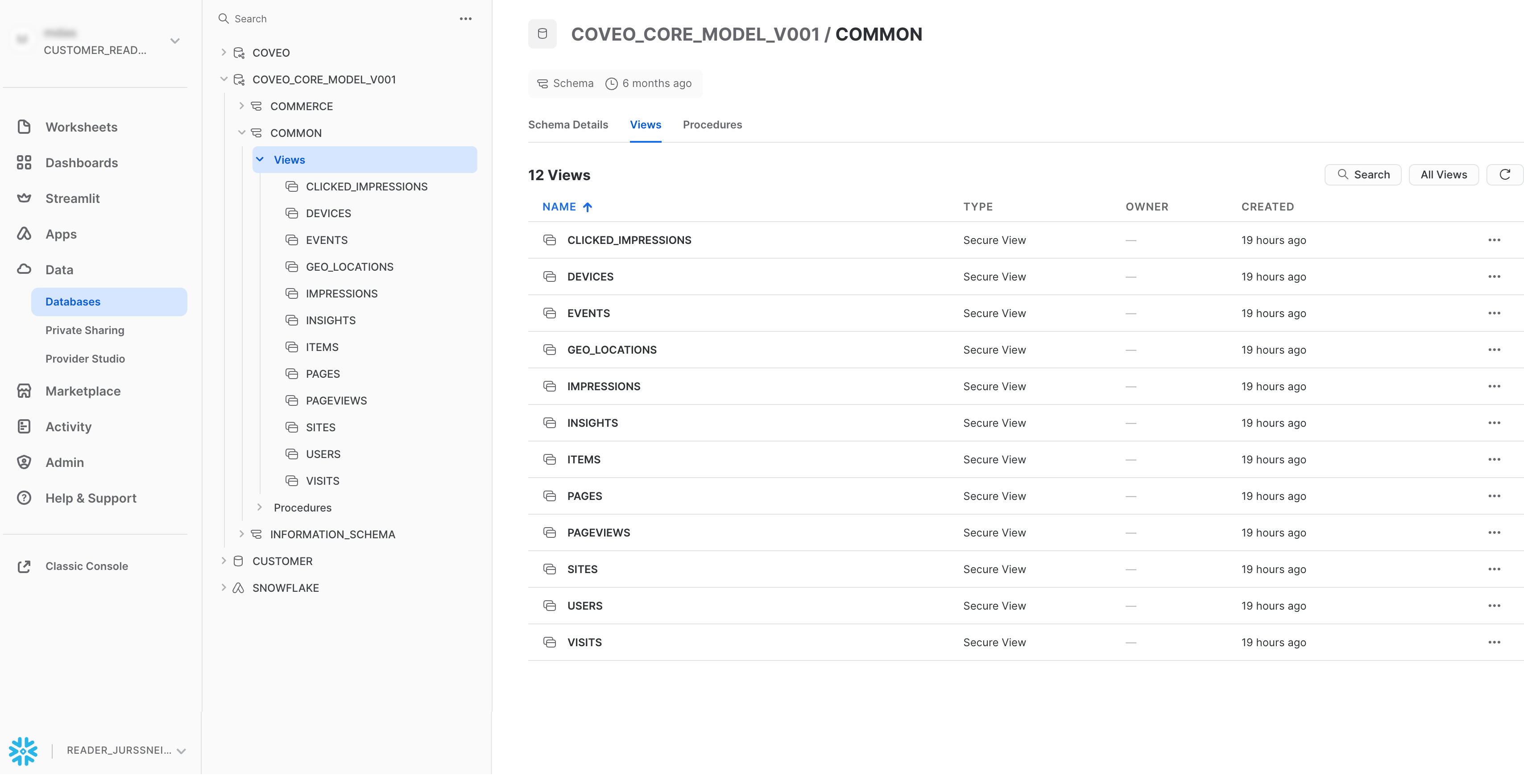CORE data model
CORE data model
The CORE data model in Snowflake serves as the foundational architecture that outlines the overall structure and relationships within Coveo Usage Analytics (Coveo UA) data. In analytics, raw events can be challenging to interpret, therefore the normalized format of the data model is helpful, as it offers a clear domain model which simplifies data analysis.
Within the CORE model, there are currently two schemas: COMMON and COMMERCE.
-
The COMMON schema encompasses a broad range of views that provide metrics related to general Coveo services, offering a comprehensive overview of standard data. It includes events such as searches, clicks, impressions, visits, and visit-related events.

-
The COMMERCE schema is specifically tailored to Coveo for Commerce implementations, with views that deliver insights into commerce-related activities. Its focus is on transaction and cart-related concepts.
Both schemas include multiple data tables, which are the core elements where the data is stored in a normalized format.
|
|
Note
The COMMON and COMMERCE schemas are available to all clients, however the COMMERCE schema will contain data only for Coveo for Commerce clients For all other clients, the COMMERCE schema will be empty. |
Built on top of these tables are views that dynamically retrieve data and present it in a relevant and up-to-date format for different use cases. This hierarchical organization ensures that the data isn’t just well-structured, but also accessible for strategic decision-making.
Advantages of using the COMMON schema
The COMMON schema in Snowflake is similar to accessing a comprehensive data warehouse for your analytics needs.
The schema covers a wide range of metrics and dimensions pertinent to different Coveo services, offering you a detailed roadmap of the data landscape. It helps you understand and use the data effectively, ensuring that you can interpret and query the data accurately.
Whether it’s for generating custom reports or optimizing data-driven strategies, the COMMON schema provides the required foundational structure to do so. More specifically, it allows you to:
-
Understand report structure
By examining the schema, you can identify which tables and fields are used in Coveo’s out-of-the-box (OOTB) UA reports. For instance, if a report is about user engagement, you might look at tables and views related to user activities, such as
CLICKED_IMPRESSIONSorEVENTSin the COMMON schema. -
Replicate queries
With knowledge of the underlying tables and fields, you can write SQL queries to replicate the data retrieval process of the OOTB reports. This involves using
JOIN,WHEREclauses, and other SQL operations to fetch and organize data in a similar structure to the original report. -
Customize and enhance reports
Once you understand how the OOTB reports are structured, you can modify or extend these reports to better suit your needs. For example, you might add additional filters, combine data from multiple views, or incorporate data from external sources.
What’s next?
To learn more about the COMMON schema, see COMMON schema reference.